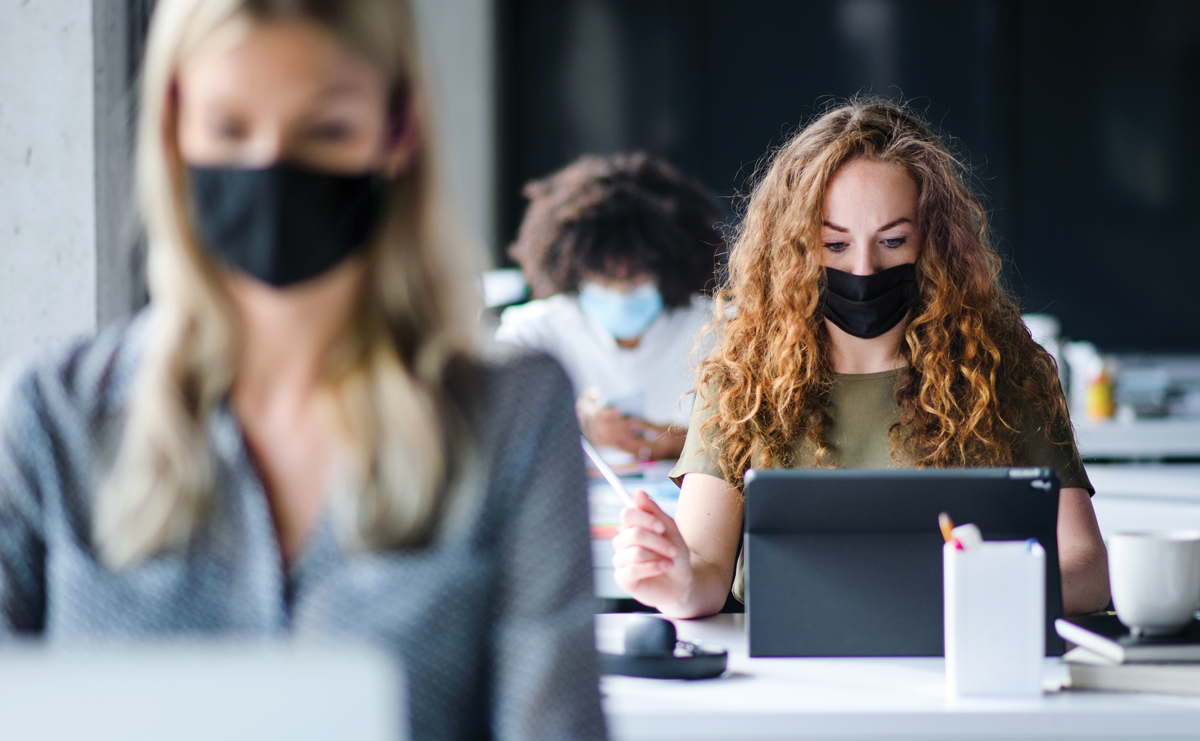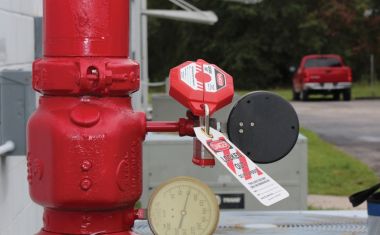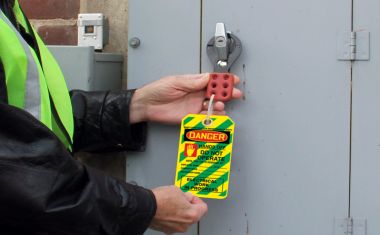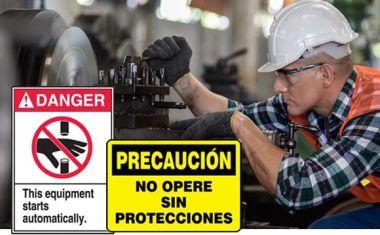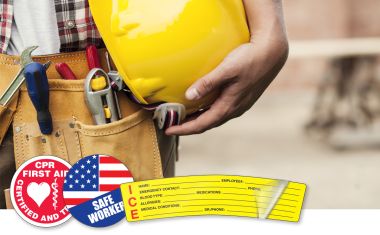7 Challenges Facing Colleges and Universities
College and university campuses have some big decisions to make about proceeding with the 2020-2021 school year - but college COVID-19 cases and safety is at the top of the list!
College is a time for students to find their passions, learn new things, and create lasting memories. Imagine your excitement as an incoming freshman only to wonder, "Will there even be a school year?" In July, the average age of COVID-19 positive cases dropped as many more 18-34-year-olds were testing positive.
College and university campuses have some big decisions to make about proceeding with the 2020-2021 school year. The coronavirus has not gone away, and if things are not handled correctly, it could flare up again, and make things even worse by causing college covid outbreaks.
That doesn't mean that campuses can't fire up for the fall semester; it's just that each one needs to take careful consideration of the risks involved and take appropriate measures to mitigate those risks. Here are seven things college administrators need to consider before bringing students back to campus.
1. Dorms are Very Close Quarters
Dorm life is a big part of the college experience. Sharing a minuscule room with a stranger and relying on shared bathrooms, usually for a whole floor of students, is a far cry from what most kids had at home.
Unfortunately, dorm life is not very safe during a pandemic. It is nearly impossible to keep six feet of distance between people in a small dorm room, and a bathroom shared by as many as 30, 40, or even more students is a nightmare.
The best option for most schools is to either eliminate on-campus living or to reduce it significantly. Some schools, such as Duke University, have already announced plans to limit their on-campus housing to first-year students and sophomores, thus reducing the numbers by about 30%. Ideally, no students would share a room, but that's unlikely to be the case in most situations. However, dorm suites with three or four students should not be allowed and could cause colleges closing due to COVID.
2. Dining Halls are Dangerous
Few things are scarier in a pandemic than a buffet. The dining hall on campus is a place where students meet, eat, and socialize. It's another major part of the college experience.
The CDC recommends that colleges close down "shared spaces such as dining halls, game rooms, exercise rooms, and lounges if possible." But, if that's not entirely possible, marking seats to encourage social distancing, thorough cleaning between mealtimes, and expanded grab-and-go meal options can make a difference. Oh, and no buffet. Providing individually plated meals is far better, no matter how many sneeze guards you have on your buffet.
3. Large Lecture Halls Could be Hot Spots
Packing 100 or more students into one vast lecture hall is a recipe for disaster. Even if masks are recommended or made mandatory, a student will inevitably forget to wear one or simply wear it improperly.
Reducing class sizes and going virtual with the larger classes could go a long way towards minimizing student risk. Opening the campus to have in-person courses means that there will inevitably be some risk, but there's no need to tempt fate.
4. Many Professors are High Risk
It's well-established that COVID-19 is more dangerous to older people and people with underlying health conditions. The two go hand in hand. As people age, common health issues like hypertension, diabetes, and heart problems can show up.
According to the College and University Professional Association for Human Resources, the average age for an American worker is 42. For tenure-track professors, that bumps up to 49, and 37% of them are over the age of 55. In short, college professors tend to be in a higher age bracket than other laborers. That means they're at increased risk.
Colleges need to have an open discourse with their instructors to understand their concerns. It may not make sense for some professors to be on campus. Having a classroom full of young people who may have COVID-19 and not showing any symptoms all facing the professor's direction is a significant risk. Requiring masks and social distancing can help, but it may not be enough.
5. College Sporting Events Should be Flagged
Who doesn't love college sports? The pageantry and camaraderie are memories that stay with students for a lifetime. But the last thing a campus needs is a stadium full of people yelling, cheering and absent-mindedly smacking high-fives.
Like professional sports have done, it may be best to take extreme precautions and move forward with college sports minus the crowd. While it's a blow to morale as well as university income, the risk of a catastrophic spread of the virus is simply too significant.
6. College Kids will Party
It's right there with death and taxes. Like it or not, college kids are going to find a way to have parties. You can bet that most of them won't include masks and social distancing, either.
While there may be no stopping it, it may be possible to temper it by hosting regular social activities outdoors. By having campus-sponsored events that follow pandemic guidelines, you create an outlet for socializing that some students will enjoy. That could be enough to keep those students from seeking out that house party in someone's poorly ventilated basement a few blocks away.
7. Have a Plan for Isolating New Cases
New cases of COVID-19 will pop up on campus. That's a certainty. When they do, you'll need to have a plan for isolation and quarantine. While the simple answer may seem to be "just put them in lockdown in their dorm room." That doesn't work because most dorm rooms do not have private bathrooms.
Find an area, possibly on dorm building property, where students can create living areas and be housed for a quarantine period. In most cases, students are sent home to recuperate, but that may not always be possible, at least not right away. Having a plan for new cases is essential in stopping the rampant spread of the virus.
Back to College is a Learning Experience
Getting kids back to college is not a simple matter. Of course, frequent testing and temperature checks will have to factor in. Social distancing, face masks, hand-sanitizer, and hygiene washing stations are other considerations. It complicates day-to-day life on campus and adds significant expense to the university.
But what is a college campus, if not a place to take on new challenges to learn and grow from them? Some will fare better than others, and those who have success will be a model for others to follow.
When you are ready to start thinking about bringing your students back to college, start with the Back to College - Quick Start Guide. You'll find the information you need to know before the first class starts and a few tips for optimizing your campus for healthy learning.
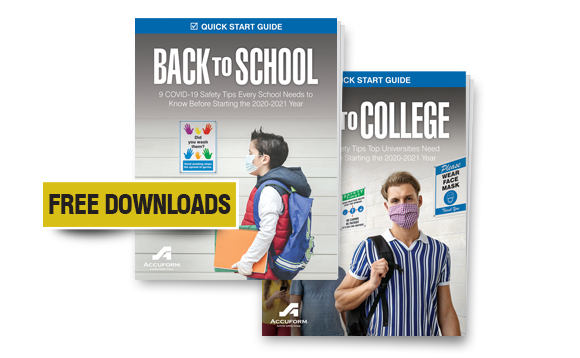
Download these guides to learn quick tips every school needs to know this school year to help in the event of an onsite infection and find practical resources to help staff and students from contracting COVID-19.
